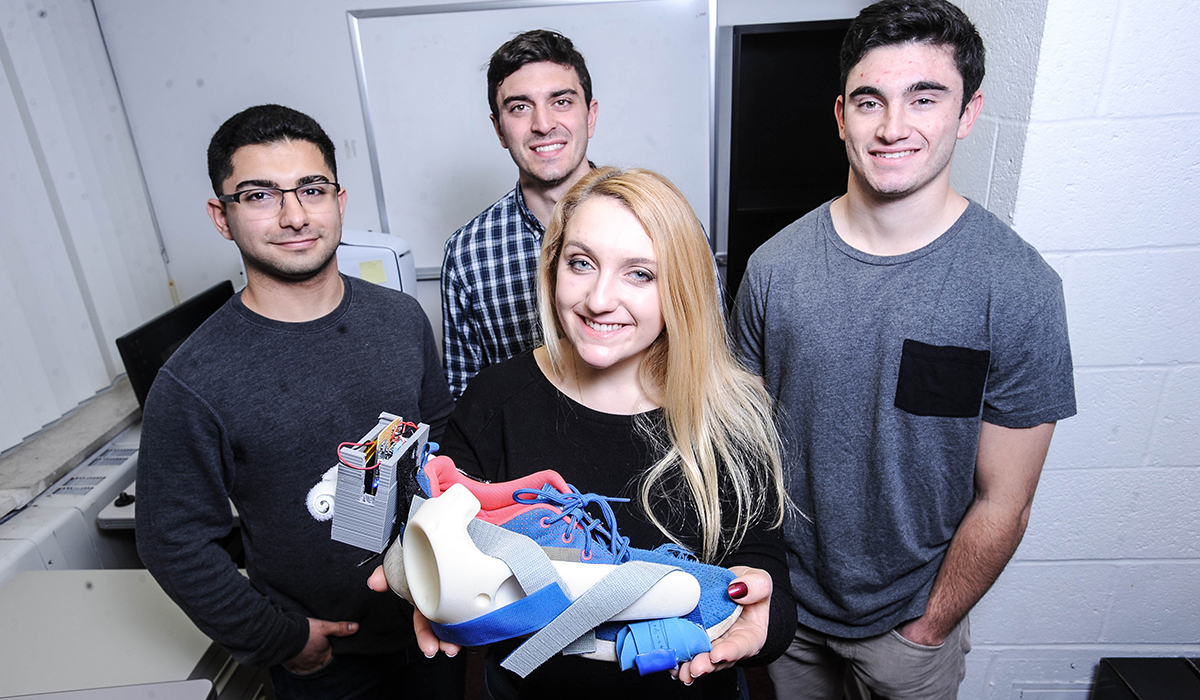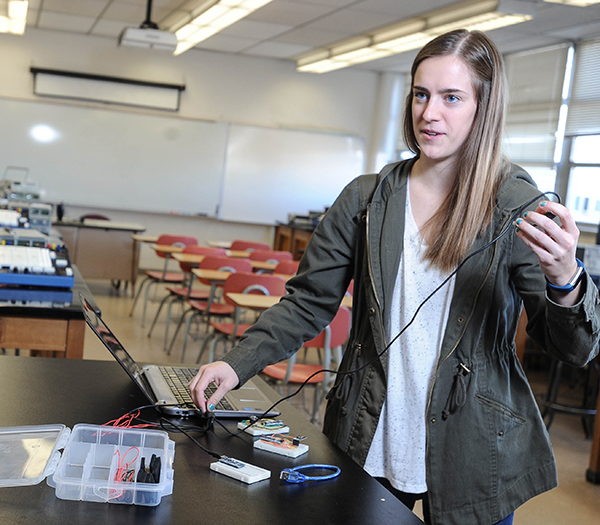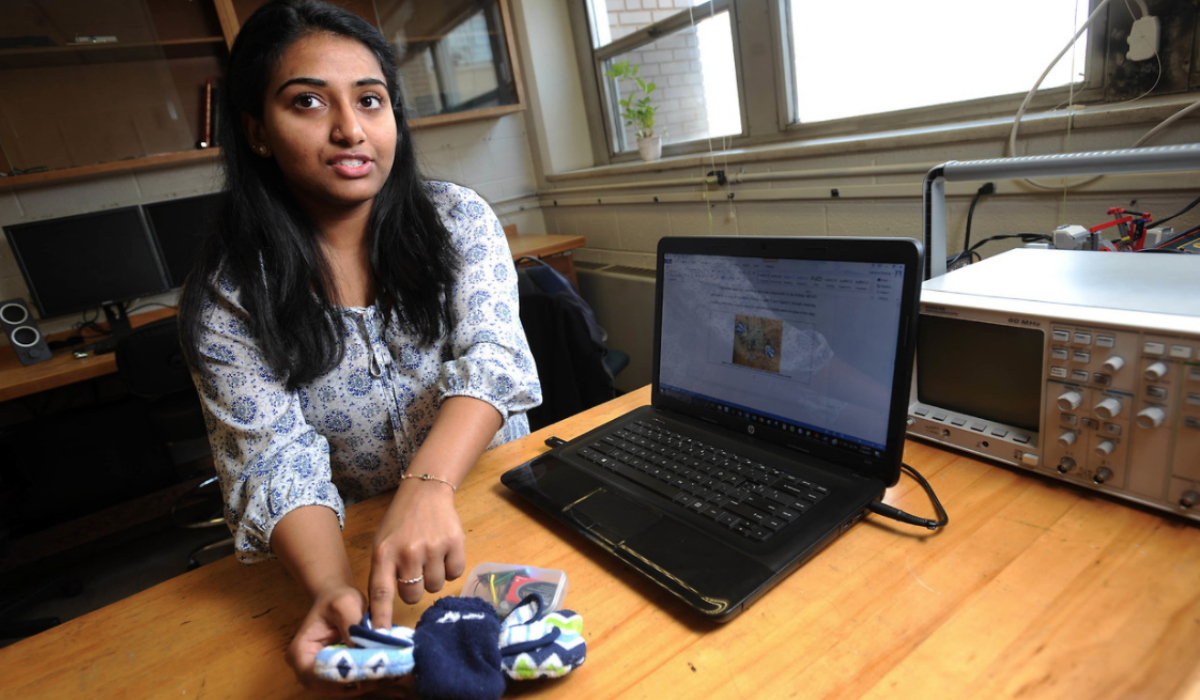

Every few weeks, senior biomedical engineering major Ben Pesante travels by Metro to a National Institutes of Health (NIH) laboratory in Bethesda, Md. As part of a senior design project, Pesante and three classmates are testing their model of a specially-designed shoe intended to measure foot motion. Thanks to connections formed with Catholic University alumnus Andrew Gravunder, they are able to do their research in state-of-the-art NIH laboratories.
“We’re going to have a Bluetooth connected to a force sensor in the shoe and then we’re going to have infrared cameras around the room to track its movements,” Pesante said. “The purpose of this shoe is to track rehabilitation progress for people with muscle disorders like arthritis, cerebral palsy, or multiple sclerosis, anyone who would need a clinician to classify that information.”
For Pesante and his team, working with NIH mentors and labs has become an added benefit of their educational experience. Last summer, Pesante was an intern in the institute’s functional and applied biomedical lab, where he worked on a motion sensor that measures hand motion of patients with myotonic dystrophy, a muscle disorder that makes it difficult for patients to relax their hands at a normal rate.

Being able to work directly with patients in real-world research trials was inspiring for Pesante, who hopes to one day become a physician.
“Just being in the environment where they were actually seeing patients and interacting with them was really cool,” he said. “It helped me to realize how God is calling me to directly help people in a clinical setting.”
Pesante is not the only engineering student who has benefitted from real-world scientific experience during his time at Catholic University. According to Engineering Dean Charles C. Nguyen, the University’s location in Washington, D.C., makes it much easier for students to take advantage of internships and educational opportunities at some of the country’s finest research institutions.
“Being in D.C., we are fortunately surrounded by governmental research laboratories, agencies, and industries which provide students with excellent opportunities to acquire working knowledge and skills while in school,” Nguyen said. “Our alumni network includes those in leadership or management positions who can help students acquire internships that will help them in the job market.”
“I think it’s really cool being able to go and do actual research based off of the stuff that we’ve learned, even after just a few years of engineering classes. It shows that even someone young can make some sort of a difference in the engineering field.”
That was certainly the case for senior Anna Stumme, an electrical engineering major from Millersville, Md. Thanks to the recommendation of Ozlem Killic, chair of the Department of Electrical Engineering and Computer Science, Stumme took an internship last summer working on military radar systems for the Naval Research Laboratory in Southwest Washington, D.C. Once the summer ended, she continued to work for the lab on a part-time basis.
“I didn’t really know much about radar or antennas before going into this,” Stumme said. “After being at Naval Research Lab for the summer and into the fall, I knew I wanted to continue.”
Stumme said she loved seeing how theories and formulas she learned in the classroom could be applied in a professional environment. She also enjoyed knowing the projects she was contributing to could one day benefit members of the U.S. military and the country as a whole.
Thanks to her internship at the Naval Research Lab last summer, Stumme also has a much clearer understanding of where her career might take her: She’s already accepted a job to continue working in the same division after she graduates.
“Learning in the classroom is a lot different than implementing these skills in the real world,” she said. “I think it’s really cool being able to go and do actual research based off of the stuff that we’ve learned, even after just a few years of engineering classes. It shows that even someone young can make some sort of a difference in the engineering field.”

Senior Catherine Premaj shows off her biomedical engineering senior design project, a feedback device for infants with motor deficiencies. Over the summer, Premaj worked as an intern at Anthrotonix, a research and design company in Silver Spring, Md.